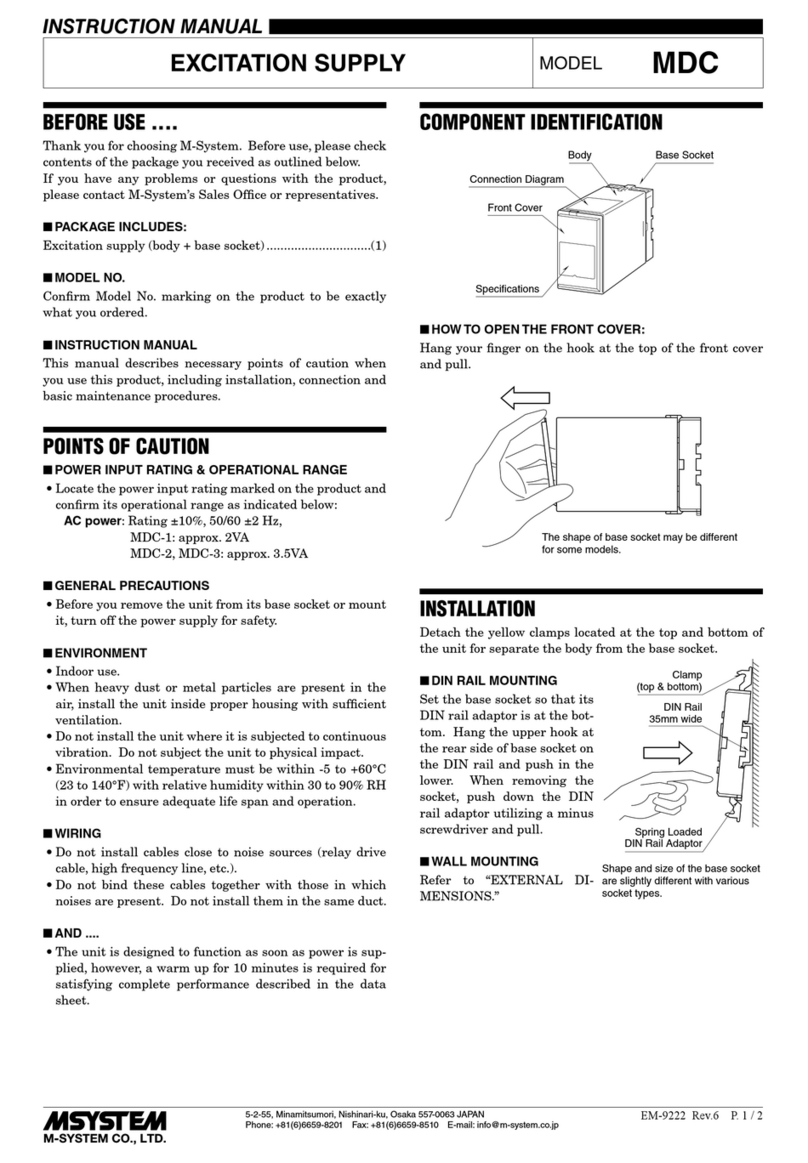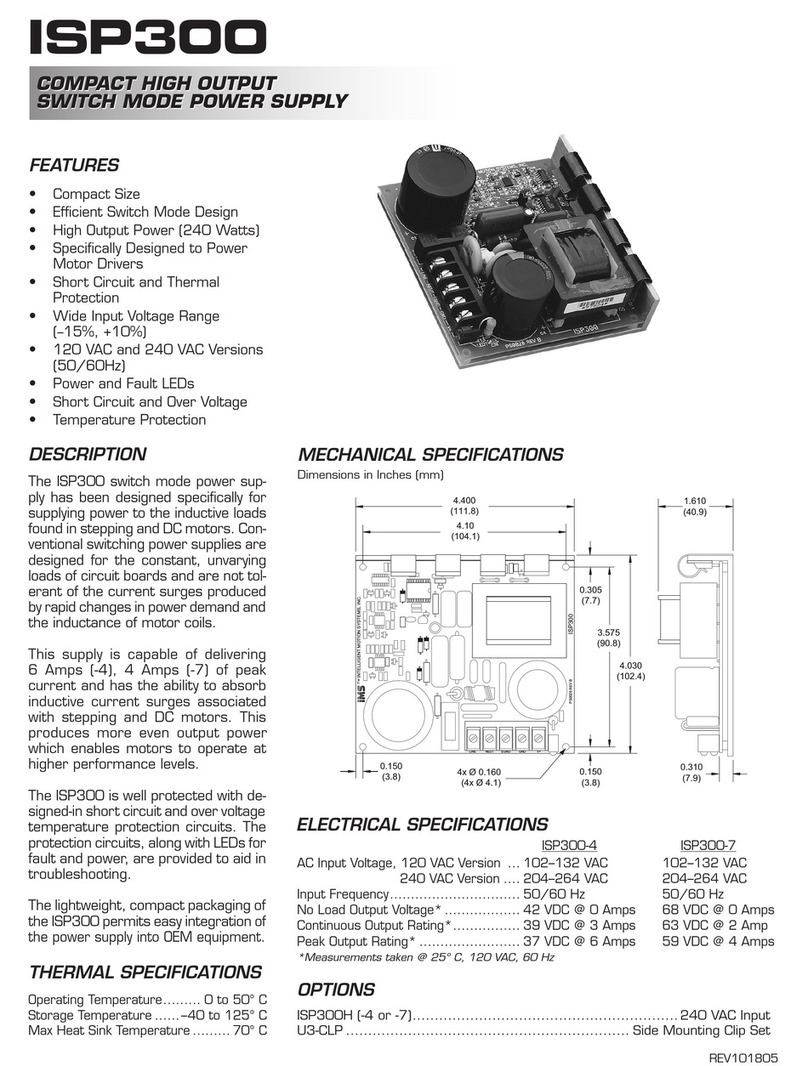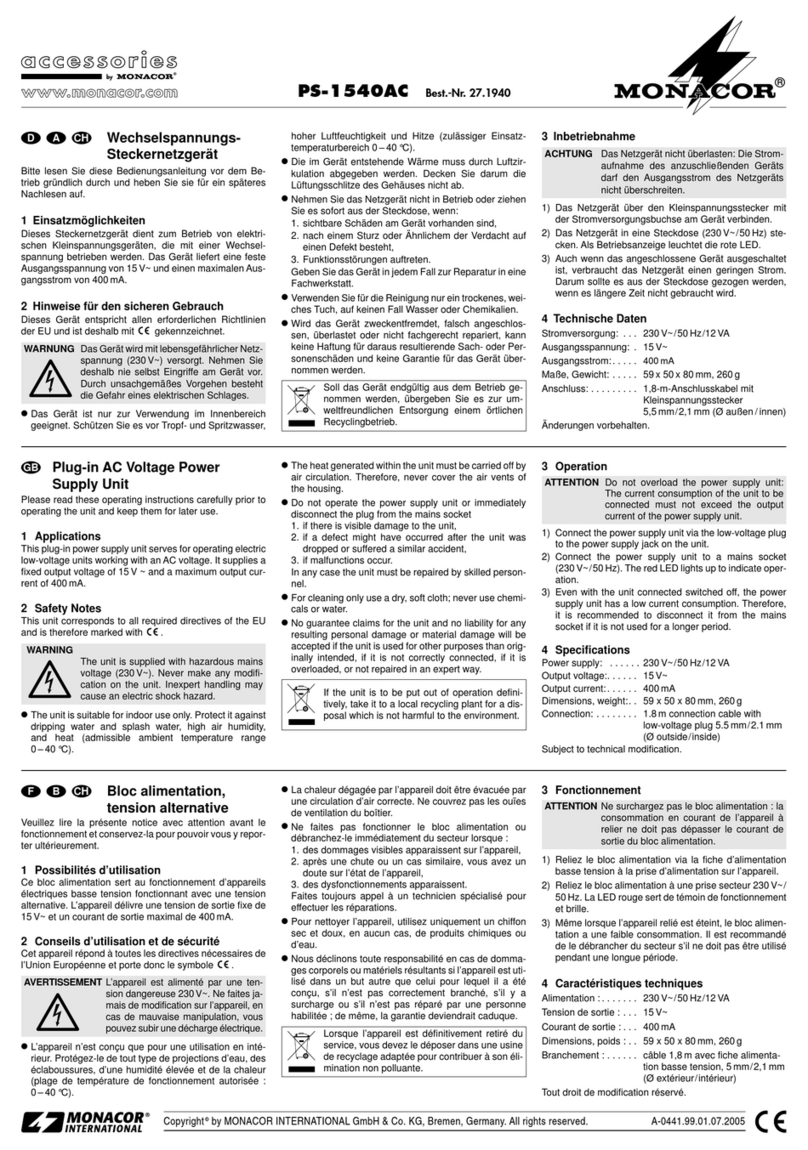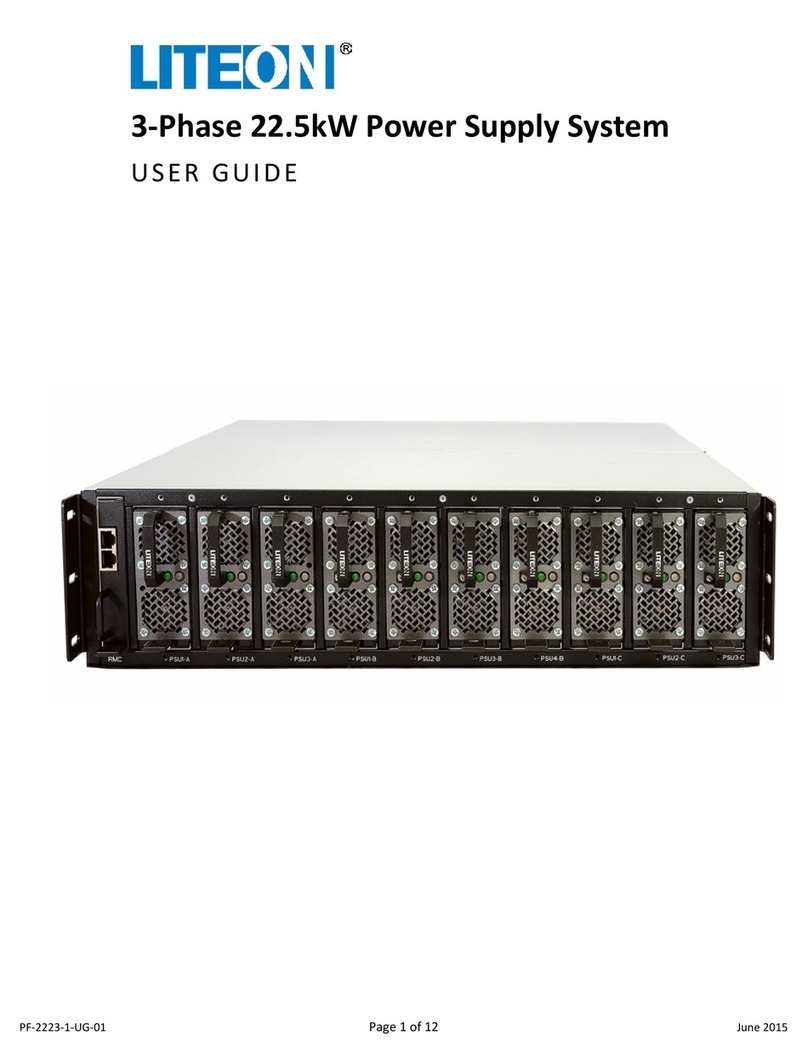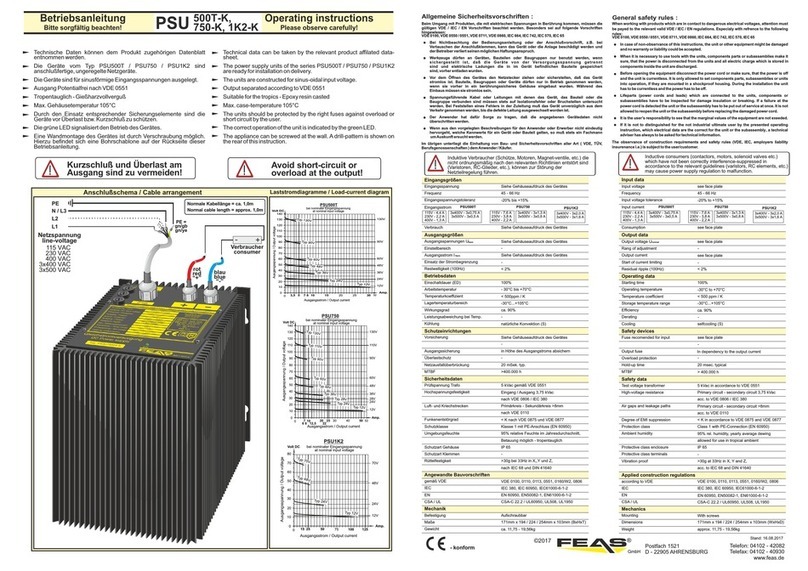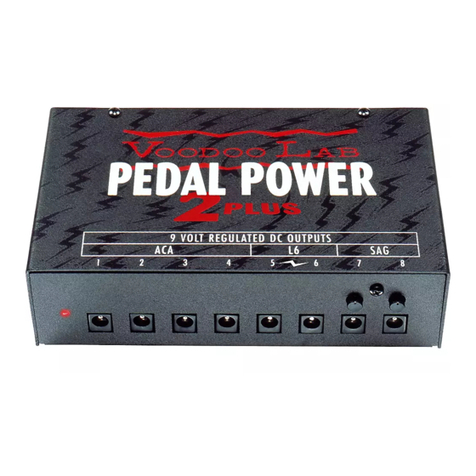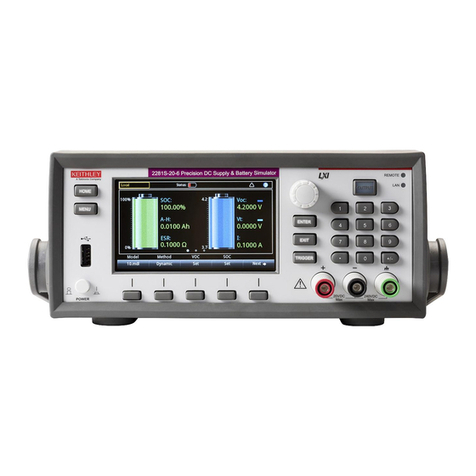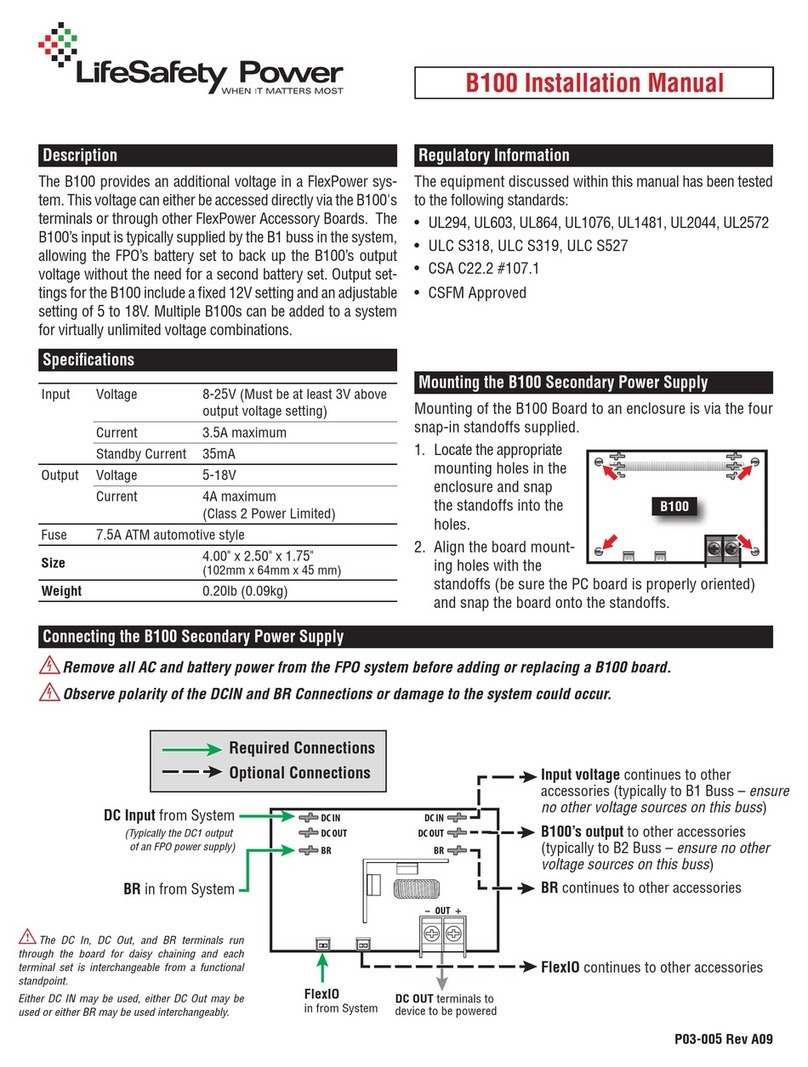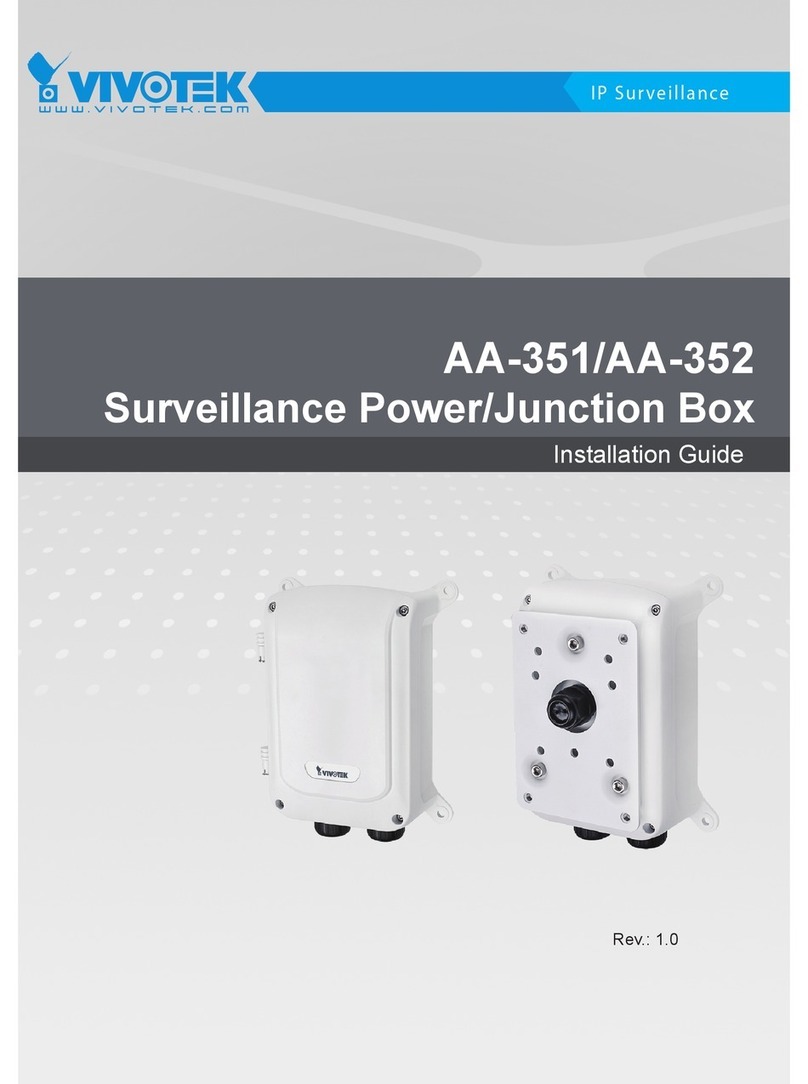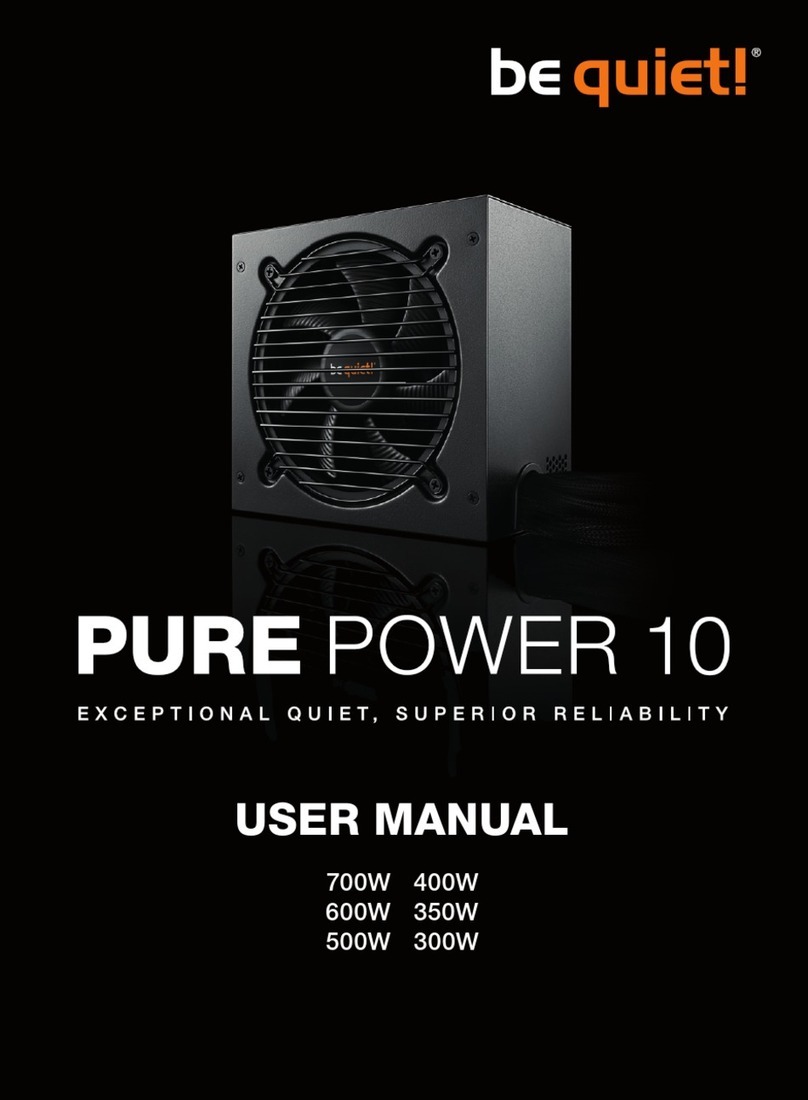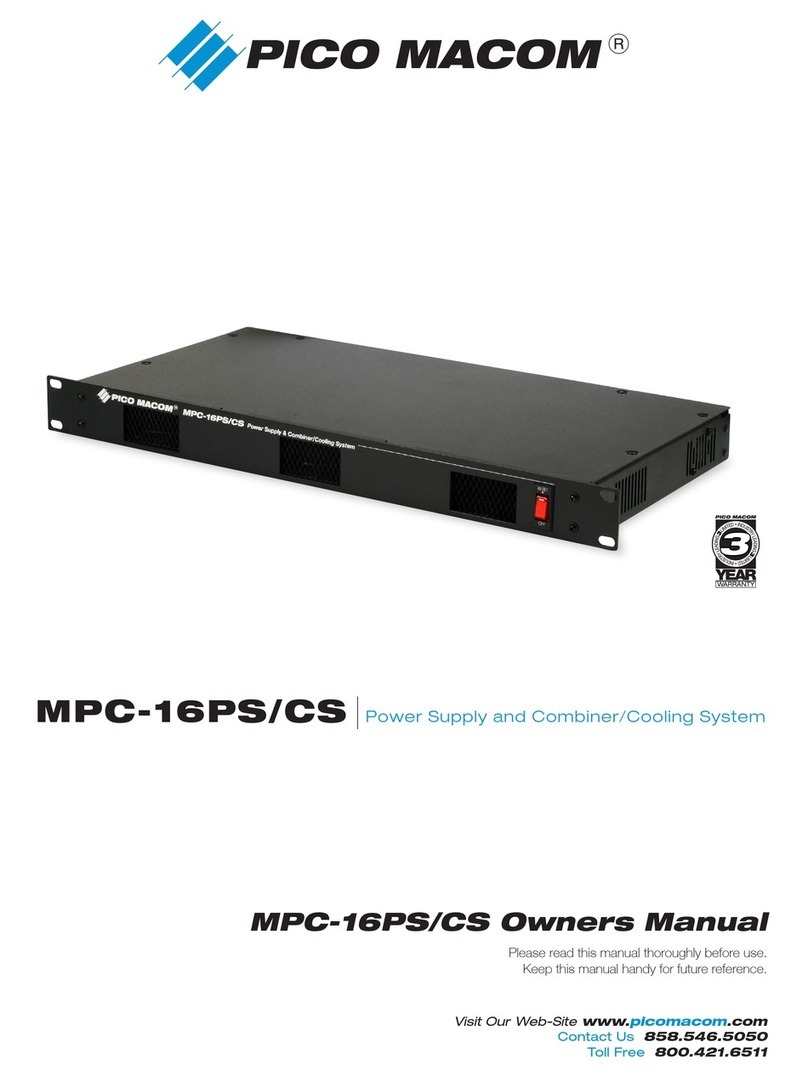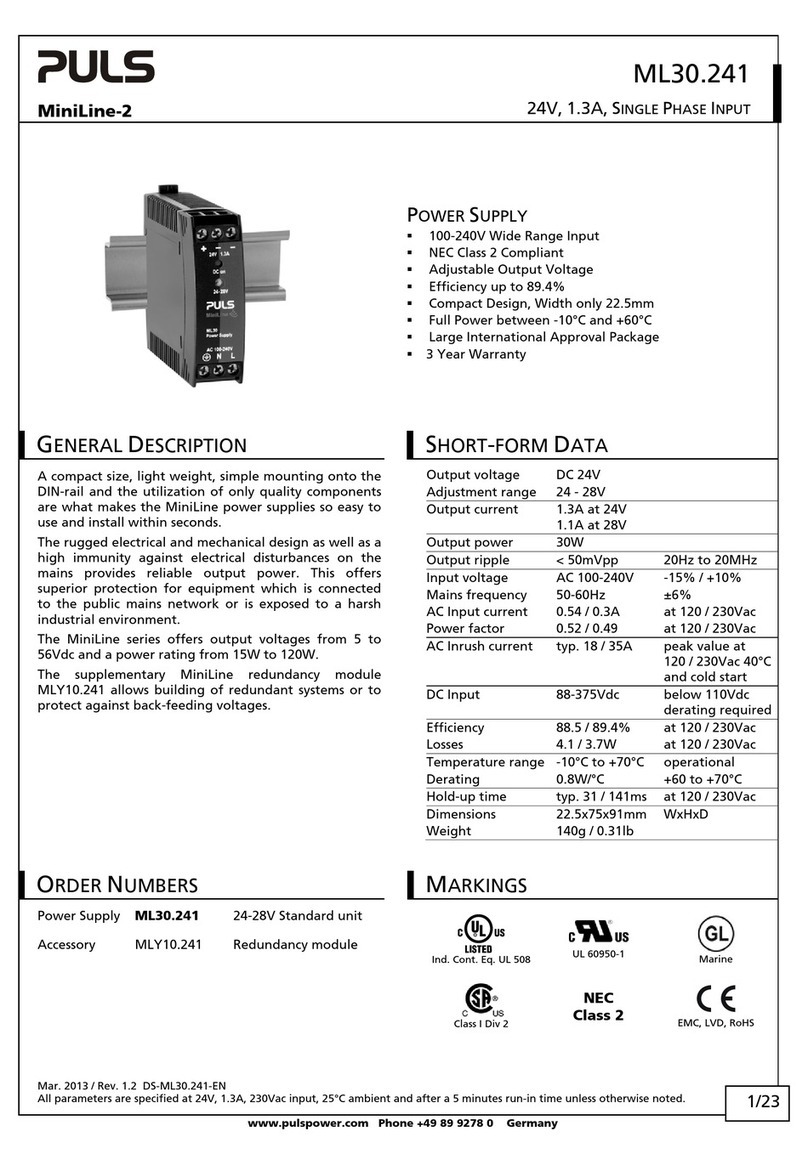Vaillant ecoPOWER 3.0 /2 User manual

Installation and maintenance instructions
ecoPOWER 3.0 /2,
ecoPOWER 4.7 /2
VNC 88+3/2 - H, - P, VNC 138+5/2 - H, - P
AT, DE
Publisher/manufacturer
Vaillant GmbH
Berghauser Str. 40 D-42859 Remscheid
Tel. +49 21 91 18‑0 Fax +49 21 91 18‑2810
[email protected] www.vaillant.de

Contents
2Installation and maintenance instructions ecoPOWER 3.0 /2, ecoPOWER 4.7 /2 0020241403_02
Contents
1 Safety.................................................................... 3
1.1 Action-related warnings ......................................... 3
1.2 Intended use.......................................................... 3
1.3 General safety information .................................... 3
1.4 Regulations (directives, laws, standards).............. 5
2 Notes on the documentation .............................. 6
2.1 Observing other applicable documents ................. 6
2.2 Storing documents................................................. 6
2.3 Validity of the instructions...................................... 6
3 Product description............................................. 6
3.1 Product design....................................................... 6
3.2 Information on the data plate................................. 6
3.3 CE marking............................................................ 6
4 Set-up.................................................................... 6
4.1 Transport ............................................................... 6
4.2 Unpacking the product........................................... 7
4.3 Checking the scope of delivery.............................. 7
4.4 Required accessory............................................... 7
4.5 Installation site....................................................... 7
4.6 Product dimensions ............................................... 8
4.7 Minimum clearances and installation
clearances ............................................................. 8
4.8 Installing the product.............................................. 8
5 Installation.......................................................... 10
5.1 Gas installation .................................................... 10
5.2 Installing the product on the heating side............ 11
5.3 Connecting the condensate siphon and
condensate discharge pipe.................................. 12
5.4 Installing the fresh air supply and flue system..... 13
5.5 Electrical installation ............................................ 13
5.6 Checking and treating the heating water/filling
and supplementary water .................................... 15
6 Start-up............................................................... 15
6.1 Presetting the start values for the gas mixer
and restrictor flap................................................. 15
6.2 Carrying out a test run ......................................... 16
6.3 Measuring and setting flue gas values ................ 17
6.4 Checking the product........................................... 17
7 Handing over to the end user........................... 17
8 Operation............................................................ 17
9 Troubleshooting ................................................ 17
9.1 Faults and warnings............................................. 17
9.2 Sensor fault.......................................................... 18
10 Inspection and maintenance ............................ 18
10.1 Inspection and maintenance interval................... 19
10.2 Inspection and maintenance work ....................... 19
11 Decommissioning.............................................. 22
11.1 Decommissioning the product ............................. 22
12 Recycling and disposal..................................... 22
13 Customer service............................................... 22
13.1 Customer service................................................. 22
Appendix ............................................................................ 23
A Overview of the required sensors.................... 23
B Overview of the 20-digit fault codes ................ 23
C Overview of the warning messages................. 26
D Overview of the maintenance work ................. 27
E Overview of the oil inspection work ................ 27
F Overview of the work required for start-up..... 28
G Connection diagram for extra-low and
mains voltage..................................................... 31
H Main menu: System settings, sub-menu:
Maintenance....................................................... 32
I Technical data.................................................... 33
Index ................................................................................... 35

Safety 1
0020241403_02 ecoPOWER 3.0 /2, ecoPOWER 4.7 /2 Installation and maintenance instructions 3
1 Safety
1.1 Action-related warnings
Classification of action-related warnings
The action-related warnings are classified in
accordance with the severity of the possible
danger using the following warning signs and
signal words:
Warning symbols and signal words
Danger!
Imminent danger to life or risk of
severe personal injury
Danger!
Risk of death from electric shock
Warning.
Risk of minor personal injury
Caution.
Risk of material or environmental
damage
1.2 Intended use
There is a risk of injury or death to the user or
others, or of damage to the product and other
property in the event of improper use or use
for which it is not intended.
The product is intended as a heat generator
for closed heating installations and for hot
water generation.
During operation, the product generates vari-
ous emissions (heat, noise, etc.). The product
therefore has to be installed in a separate
boiler room in the building's cellar. This may
affect other installations in this boiler room
and the use of this boiler room.
Depending on the gas-fired boiler type, the
products referred to in these instructions
must only be installed and operated in con-
junction with the air/flue pipe accessories lis-
ted in the other applicable documents.
Intended use includes the following:
–observance of accompanying operating,
installation and servicing instructions for
the product and any other system compon-
ents
–installing and fitting the product in accord-
ance with the product and system approval
–compliance with all inspection and main-
tenance conditions listed in the instruc-
tions.
Intended use also covers installation in ac-
cordance with the IP code.
Any other use that is not specified in these
instructions, or use beyond that specified in
this document shall be considered improper
use. Any direct commercial or industrial use
is also deemed to be improper.
Caution.
Improper use of any kind is prohibited.
1.3 General safety information
1.3.1 Risk caused by inadequate
qualifications
The following work must only be carried out
by competent persons who are sufficiently
qualified to do so:
–Set-up
–Dismantling
–Installation
–Start-up
–Inspection and maintenance
–Repair
–Decommissioning
▶Observe all instructions that are included
with the product.
▶Proceed in accordance with current tech-
nology.
▶Observe all applicable directives, stand-
ards, laws and other regulations.
1.3.2 Danger caused by a lack of
additional qualifications
Only a certified competent person who
has completed special training for the
ecoPOWER 3.0 / 4.7 can carry out work on
the product.
1.3.3 Informing the responsible
departments
Applicability: Germany
There is a duty of disclosure to the respons-
ible authorities. The regulations are governed
by the regional building control. The local reg-
ulations, such as the TAB (technical connec-

1 Safety
4Installation and maintenance instructions ecoPOWER 3.0 /2, ecoPOWER 4.7 /2 0020241403_02
tion requirements) of the following authorities
must be observed:
–Energy supply company
–Building authority
–Main customs office (for energy tax ex-
emptions)
–Chimney sweep (acceptance certificate,
obligation to have flues cleaned by a chim-
ney sweep on a regular basis)
1.3.4 Risk of injury due to the heavy
weight of the product
▶The product weighs approx. 400 kg.
▶Before transporting/lifting the product, re-
move the side panels (each weighs 37 kg)
to reduce the weight.
▶Transport the product using a fork-lift
truck that is suitable for the weight of
the product. Secure the product against
slipping and tipping over.
▶When lifting the product, use hoisting and
rigging gear that is suitable for the weight
of the product. Secure the rigging material
or hoist the product only in the load-carry-
ing area of the product, between the pro-
duct's feet. Secure the rigging gear against
slipping.
1.3.5 Risk of death from escaping gas
What to do if you smell gas in the building:
▶Avoid rooms that smell of gas.
▶If possible, open doors and windows fully
and ensure adequate ventilation.
▶Do not use naked flames (e.g. lighters,
matches).
▶Do not smoke.
▶Do not use any electrical switches, mains
plugs, doorbells, telephones or other com-
munication systems in the building.
▶Close the emergency control valve or the
main isolator.
▶If possible, close the gas isolator cock on
the product.
▶Warn other occupants in the building by
yelling or banging on doors or walls.
▶Leave the building immediately and ensure
that others do not enter the building.
▶Alert the police and fire brigade as soon as
you are outside the building.
▶Use a telephone outside the building to
inform the emergency service department
of the gas supply company.
1.3.6 Risk of death from leaks if the
product is installed below ground
level
Liquid gas accumulates at floor level. If the
product is installed below ground level, liquid
gas may accumulate at floor level if there
are any leaks. In this case, there is a risk of
explosion.
▶Make sure that liquid gas cannot escape
from the product or the gas line under any
circumstance.
1.3.7 Risk of death due to blocked or
leaking flue gas routes
Installation errors, damage, tampering, unau-
thorised installation sites or similar can cause
flue gas to escape and result in a risk of pois-
oning.
What to do if you smell flue gas in the prop-
erty:
▶Open all accessible doors and windows
fully to provide ventilation.
▶Switch off the product.
▶Check the flue gas routes in the product
and the flue gas diversions.
1.3.8 Risk of death from electric shock
There is a risk of death from electric shock if
you touch live components.
Before commencing work on the product:
▶Disconnect the product from the power
supply by switching off all power supplies
at all poles (electrical partition with a con-
tact gap of at least 3 mm, e.g. fuse or cir-
cuit breaker).
▶Secure against being switched back on
again.
▶Wait for at least 3 minutes until the capa-
citors have discharged.
▶Check that there is no voltage.

Safety 1
0020241403_02 ecoPOWER 3.0 /2, ecoPOWER 4.7 /2 Installation and maintenance instructions 5
1.3.9 Risk of death due to lack of safety
devices
The schematic drawings included in this doc-
ument do not show all safety devices re-
quired for correct installation.
▶Install the necessary safety devices in the
system.
▶Observe the applicable national and inter-
national laws, standards and guidelines.
1.3.10 Risk of death due to explosive and
flammable materials
▶Do not use the product in storage rooms
that contain explosive or flammable sub-
stances (such as petrol, paper or paint).
1.3.11 Risk of poisoning caused by
insufficient combustion air supply
Conditions: Open-flued operation
▶Ensure that the air supply to the product's
installation room is permanently unobstruc-
ted and sufficient in accordance with the
relevant ventilation requirements.
1.3.12 Risk of corrosion damage due to
unsuitable combustion and room
air
Sprays, solvents, chlorinated cleaning
agents, paint, adhesives, ammonia com-
pounds, dust or similar substances may lead
to corrosion on the product and in the flue
system.
▶Ensure that the supply of combustion air is
always free of fluorine, chlorine, sulphur,
dust, etc.
▶Ensure that no chemical substances are
stored at the installation site.
▶If you are installing the product in
hairdressing salons, painter's or joiner's
workshops, cleaning businesses or similar
locations, choose a separate installation
room in which the room air is technically
free of chemical substances.
▶Ensure that the combustion air is not
routed through chimneys which have
previously been used with floor-standing
oil-fired boilers, or with other boilers,
which could cause soot to build up in the
chimney.
1.3.13 Risk of material damage caused by
frost
▶Do not install the product in rooms prone
to frost.
1.3.14 Risk of being burned or scalded by
hot components
▶Only carry out work on these components
once they have cooled down.
1.3.15 Risk of material damage caused by
using an unsuitable tool
▶Use the correct tool to tighten or loosen
threaded connections.
1.3.16 Risk of material damage caused by
radio interference
This equipment is not intended for use in
living areas and it may not be possible to
guarantee appropriate protection for the radio
reception in such environments.
▶Do not install the product in living areas.
1.4 Regulations (directives, laws,
standards)
▶Observe the national regulations, stand-
ards, guidelines and laws.

2 Notes on the documentation
6Installation and maintenance instructions ecoPOWER 3.0 /2, ecoPOWER 4.7 /2 0020241403_02
2 Notes on the documentation
2.1 Observing other applicable documents
▶You must observe all the operating and installation in-
structions included with the system components.
2.2 Storing documents
▶Pass these instructions and all other applicable docu-
ments on to the system operator.
2.3 Validity of the instructions
These instructions apply only to:
Product type and article number
VNC 138+5/2 - H 0010020568 (natural gas)
VNC 138+5/2 - P 0010020569 (liquefied petroleum gas)
VNC 88+3/2 - H 0010020570 (natural gas)
VNC 88+3/2 - P 0010020571 (liquefied petroleum gas)
3 Product description
3.1 Product design
2
1
3
4
5
6
7
8
9
10
21
22
19
17
16
14
15
13
12
11
20
18
1 Viewing glass for the
net electricity meter
2 Motor switch
3 Purging valve
4 Ignition cable
5 Lambda sensor
6 Vibration damper
7 Oil filter
8 Dipstick
9 Oil level switch
10 Front electronics box
11 Heating return
12 Condensate discharge
13 Heating flow
14 Gas valve assembly
(example: natural gas)
15 Gas connection
16 Coolant reservoir
17 Intake air damper
18 Inspection opening
19 Rear electronics box
20 Diagnostics interface
21 Connection for the air
pipe
22 Connection for flue
system
3.2 Information on the data plate
The data plate is attached to the control cabinet at the fact-
ory.
Information on the data
plate
Meaning
Serial no. Serial number (the 7th to 16th
digits of the serial number
form the article number)
VNC ... Type designation
Installation type (e.g. B) Approved flue connections
Cat. (e.g. I2ELL) Approved gas category
2E/2H, G20 –20 mbar
3P, G31 –50 mbar
Gas group set at factory, gas
connection pressure
P(75/50 °C) Thermal power, modulating
Q Input power
Pel. Electrical power, modulating
Speed range Variable motor speed
Min. methane number/min.
octane number
∞
PMS (e.g. 3 bar (0.3 MPa)) Permissible total overpressure
in heating mode
Tmax Maximum flow temperature
INominal, max./phase ∞
El. fuse protection Electrical fuse protection
... V, .. Hz Mains voltage, mains fre-
quency
. - ... W Electrical power consumption
IP .. IP rating
Read the instructions.
3.3 CE marking
The CE marking shows that the products comply with the
basic requirements of the applicable directives as stated on
the data plate.
The declaration of conformity can be found in the appendix
to the operating instructions.
4 Set-up
4.1 Transport
When transporting the product, observe the following warn-
ings:
Danger!
Risk of severe injury when lifting and
transporting the product!
The product weighs approx. 400 kg.
▶Before transporting/lifting the product,
remove the side panels (each weighs 37
kg) to reduce the weight.

Set-up 4
0020241403_02 ecoPOWER 3.0 /2, ecoPOWER 4.7 /2 Installation and maintenance instructions 7
▶Transport the product using a fork-lift
truck that is suitable for the weight of the
product. Secure the product against slip-
ping and tipping over.
▶When lifting the product, use hoisting and
rigging gear that is suitable for the weight
of the product. Secure the rigging mater-
ial or hoist the product only in the load-
carrying area of the product, between the
product's feet. Secure the rigging gear
against slipping.
Caution.
Risk of motor damage when the maximum
lateral angle of inclination is exceeded.
▶Have the product at a maximum lateral
angle of inclination of up to 45°.
1
Load-carrying area (1) between the feet, to secure rigging
gear and to lift the product.
4.2 Unpacking the product
1. Remove the protective film from all parts of the product.
2. Remove the collapsible boxes and polystyrene sections
from the product.
4.3 Checking the scope of delivery
▶Check that the scope of delivery is complete and intact.
Number Designation
1 ecoPOWER
7 VR 10 standard sensor
1 Condensate siphon
1 Square spanner for the side panels
1 NI 1000 room temperature sensor
1 VRC 693 outdoor temperature sensor
4 Absorption damper
Number Designation
Various Operating instructions, installation and main-
tenance instructions, commissioning checklist,
service record
4.4 Required accessory
The following accessories are required for the installation:
–Connection kit
–Return retention group
–Gas safety hose
–Heating flow hose
–Heating return hose
The following accessory is available for the optional remote
monitoring system:
–VPN communication unit (requires Internet access)
4.5 Installation site
When selecting and equipping the installation room, observe
the national regulations, standards, directives and laws that
are relevant for operating heat production sources.
The product meets the requirements of Class A in accord-
ance with CISPR 11. The product may cause radio interfer-
ence in the living area.
During operation, the product generates various emissions
(heat, noise, etc.). For operation as intended and without dis-
ruptions, installation must therefore be carried out in a sep-
arate room in the cellar of the building. Other installations in
the same installation room as the product may be influenced.
4.5.1 Influence of the installation height on the
electrical power
The product's electrical power varies depending on the in-
stallation height.
Based on an environmental temperature of 20 °C and 100%
nominal output at sea level (0 m NHN (above sea level)), the
product has the following electrical power depending on the
installation height (above sea level):
Installation
height [m]
VNC 88+3/2 elec-
trical power
VNC 135+3/2 elec-
trical power
0 3.0 kWel 4.7 kWel
500 2.8 kWel 4.4 kWel
1000 2.7 kWel 4.2 kWel
1500 2.5 kWel 3.9 kWel
2000 2.3 kWel 3.7 kWel
4.5.2 Sound insulation
Due to the operating noises that are produced, sound insula-
tion measures are particularly necessary when installing the
system in residential buildings, hotels, etc.
▶To isolate structure-borne sound, we recommend pla-
cing the product on a floor panel (base) that weighs at
least 400 kg and is separated from the rest of the building
structure.
▶Connect the product using the flexible connection pipes.
▶Equip the flue pipework at the chimney opening with an
insulation jacket (mineral wool).

4 Set-up
8Installation and maintenance instructions ecoPOWER 3.0 /2, ecoPOWER 4.7 /2 0020241403_02
–The flue pipework must not be completely walled in.
▶Secure the flue pipework using pipe clamps that are isol-
ated from structure-borne sound.
▶Consider additional sound insulation measures in each
case.
4.5.3 Environmental conditions
The product is designed for installation in dry, frost-free
rooms with non-explosive atmospheres.
The product's electronics are cooled using room air. To en-
sure sufficient cooling, the temperature in the installation
room must not exceed 40 °C.
The air humidity must not be higher than 75%.
4.6 Product dimensions
1370
660
103132
1085
762
65
4.7 Minimum clearances and installation
clearances
> 550
< 232
300700
500 400
The specified minimum clearances and installation clear-
ances are required for installing/setting up the product as
well as for carrying out future maintenance work.
4.8 Installing the product
1. Place the product on level ground.
2. Place the absorption dampers under the product's feet.
3. Remove the transport lock (cable tie) from the coolant
reservoir's retainer.
4. Refit the side panels if you removed for transport.

Set-up 4
0020241403_02 ecoPOWER 3.0 /2, ecoPOWER 4.7 /2 Installation and maintenance instructions 9
4.8.1 Installing the return retention group
1
3
2
1. Drill a hole in the wall at a suitable location.
2. Insert the plastic rawl plug.
3. Screw in the wall bracket (1) tightly.
4. Cut out the pre-punched slits (2) in the rear insulation
jacket (3).
5. Fit the insulation jacket on the wall bracket.
1
6
4
5
6. Hook the return retention group (4) into the wall bracket
such that the wall bracket engages in the ball valve's
hex socket (5) on the right and left.
7. Fit the front insulation jacket (6) onto the return reten-
tion group.
4.8.2 Installing sensors
You must connect different sensors depending on the config-
uration of the heating system and the control type. The basic
hydraulic diagram shows where to fit the sensors.
4.8.2.1 Installing the outdoor temperature sensor
Caution.
Risk of material damage caused by incor-
rect installation of the outdoor temperat-
ure sensor
Incorrect installation may cause damage to
the product or to the wall of the building, e.g.
from the penetration of dampness.
▶Install the connection cable with a slight
incline to the outside and with a loop to
catch drips.
▶Install the outdoor temperature sensor
with the grommet downwards.
5
4
2
3
1
2
3
1. Mark a suitable position on the external wall. Observe
the cable laying for the outdoor temperature sensor.
2. Route the connection cable (3) on-site with a slight in-
cline to the outside and with a loop to catch drips.
3. Remove the housing cover (5) from the outdoor temper-
ature sensor.
4. Position the housing cover on the external wall and
mark the drill holes through the mounting holes (1).
5. Drill two holes.

5 Installation
10 Installation and maintenance instructions ecoPOWER 3.0 /2, ecoPOWER 4.7 /2 0020241403_02
–Diameter: 6 mm
6. Insert the wall plugs supplied.
7. Use two screws to secure the wall base (4) to the ex-
ternal wall such that the grommet points downwards.
8. Unfasten the union nut (2) slightly and slide the connec-
tion cable through the grommet from below.
9. Connect the connection cable to the outdoor temperat-
ure sensor and to the connection provided for it in the
product's electronics box (→Electrical installation).
10. Retighten the union nut (2). The seal in the grommet
adapts to the diameter of the cable used.
–Cable diameter: 4.5-10 mm
11. Place the seal between the wall base and the housing
cover.
12. Push the casing cover onto the wall base until it clicks
in position.
4.8.2.2 Installing the room temperature sensor
▶Install the room temperature sensor in a living room with
a height of approx. 1.5 m, and ensure that there is suffi-
cient clearance to heat sources, windows or doors.
4.8.2.3 Installing the VR 10 standard sensor
The VR 10 standard sensor can be used as follows:
–As a cylinder temperature sensor (e.g. as a immersion
sensor in a dry pocket),
–As a flow temperature sensor (e.g. in a low loss header),
–With the enclosed strap as a surface-mounted sensor on
a flow or return pipe.
4.8.2.4 Installing the modulating VR 34 bus coupler
Conditions: A Vaillant peak load unit should be actuated by modulation.
▶Install the optional VR 34 bus coupler as described in
the installation instructions for the bus coupler.
5 Installation
Danger!
Risk of scalding and/or damage due to
incorrect installation leading to escaping
water.
Mechanical stresses in the connection pipes
may lead to leaks.
▶Ensure that there is no mechanical stress
when installing the connection pipes.
Caution.
Risk of material damage caused by
residues in the pipelines.
Welding remnants, sealing residues, dirt or
other residues in the pipelines may damage
the product.
▶Flush the heating installation thoroughly
before installing the product.
1150
30
320
251
132
642
570
634
283
1
2
10
9
3
4
5
6
7
8
1 Electrical connections
(extra-low voltage)
2 Electrical connections
(mains voltage)
3 Power supply
4 Heating flow, dia-
meter R3/4″ISO 7-
1
5 Heating return, dia-
meter R3/4″ISO 7-1
(incl. return temperature
sensor)
6 Condensate discharge,
40 mm diameter
7 Gas connection, dia-
meter Rp1/2″ISO 7-1
8 Diagnostics interface
9 Flue system connection,
75 mm diameter
10 Air pipe connection,
75 mm diameter
Note
Seals made of rubber-like materials may be sub-
ject to plastic deformation, which can lead to pres-
sure losses. We recommend using seals made of
a paste-like fibre material.
5.1 Gas installation
5.1.1 Purging the liquid gas tank
If the liquid gas tank is not purged properly, this may result in
ignition problems.
▶Ensure that the liquid gas tank has been purged properly
before installing the product.
▶If required, contact the filler or the liquid gas supplier.
5.1.2 Using the correct type of gas
Using the incorrect type of gas may cause fault shutdowns in
the product. Ignition and combustion noise may occur in the
product.
▶Only use the gas type listed on the data plate.

Installation 5
0020241403_02 ecoPOWER 3.0 /2, ecoPOWER 4.7 /2 Installation and maintenance instructions 11
5.1.3 Installing the gas connection
Note
The dynamic gas connection pressure must be
at least 1.5 kPa (15 mbar) and at most 5.0 kPa
(50 mbar).
1. Check that the gas used is compatible with the informa-
tion on the data plate.
Conditions: Fuel: Natural gas, Gas connection pressure > 5.0 kPa
(50 mbar)
▶Install a pressure regulator.
Conditions: Fuel: Liquefied petroleum gas
▶Install a pressure reducer.
2
1
2. Blow the gas safety hose from the connection kit clean.
3. Fit the gas safety hose (2) to the gas connection (1)
so that it sags and is without tension. Secure the gas
safety hose using pipe clamps with rubber inserts.
4. Install an easily accessible gas stopcock upstream of
the gas connection.
5. Purge the gas pipe before start-up.
6. Check the gas connection for leak-tightness.
5.2 Installing the product on the heating side
5.2.1 Connecting the product to the heating
installation
Caution.
Risk of material damage caused by
residues in the pipelines.
Welding remnants, sealing residues, dirt or
other residues in the pipelines may damage
the product.
▶Flush the heating installation thoroughly
before installing the product.
1. Ensure that the heating installation's operating pressure
is within the permissible limit values.
1
1
2
2
3
4
2. In each case, insert a seal (1) into the union nuts (2) on
the hoses.
3. Screw the hoses (3, 4) to the product's flow and return
connections.
4. Ensure that it is possible to rinse the plate heat ex-
changer that is installed in the product.
3
4
5. Screw the hose (3) from the product's flow connection
to the bottom-left connection of the return retention
group.
6. Screw the hose (4) from the product's return connection
to the bottom-right connection of the return retention
group.
7. Open the stopcocks to the heating circuit.
8. Secure the stopcocks against being unintentionally
closed again.
9. Purge the heating circuit.
10. Check that the heating circuit is leak-tight.

5 Installation
12 Installation and maintenance instructions ecoPOWER 3.0 /2, ecoPOWER 4.7 /2 0020241403_02
5.2.2 Pressure loss in the 3-port diverter valve
1000
100
0
10
100 1000
B
A
10000
1
2
3
A Volume flow [l/h]
B Pressure loss [mbar]
1 KVs = 2.5 m³/h
2KVs = 6.3 m³/h (mixing
valve)
3 KVs = 8.0 m³/h
5.2.3 Return retention group pump diagram
0 0,5 1,0 1,5 2,0 2,5 3,0 3,5
1
2
3
4
5
6
A
B
1
A Flow rate [m³/h]
B Remaining feed head
[m]
1 Max. Δp
5.2.4 Installing a sludge separator
▶In the product's return, install a coarse filter and a sludge
separator with magnetite function (not included in the
scope of delivery) to protect the internal heat exchanger
against dirt deposits.
5.2.5 Installing the pressure expansion vessel
▶Install a pressure expansion vessel and a safety as-
sembly in the return to the product.
▶Check that the volumetric capacity of the expansion ves-
sel is sufficient for the system volume.
5.3 Connecting the condensate siphon and
condensate discharge pipe
Danger!
Risk of death caused by incorrectly in-
stalled condensate discharge pipes
Drain pipework that is tightly connected to the
waste-water pipework can be used to drain
the condensate siphon and to therefore let
flue gas escape through the empty condens-
ate siphon.
▶Do not connect the condensate discharge
pipe tightly to the waste-water pipework.
▶Fill the condensate siphon with water be-
fore starting up for the first time and be-
fore starting up again after extended inter-
ruptions to operations.
▶Install the supplied condensate siphon on the condensate
drain pipe.
▶Fill the condensate siphon with water.
▶Install a condensate discharge pipe on the condensate
siphon. Use only pipes made of acid-resistant material
(e.g. plastic) for the condensate discharge pipe.
▶Install a tundish to the rear of or beside the product in
such a way that the tundish can be seen.
▶Guide the condensate discharge pipe into the tundish
with a downward gradient.

Installation 5
0020241403_02 ecoPOWER 3.0 /2, ecoPOWER 4.7 /2 Installation and maintenance instructions 13
5.4 Installing the fresh air supply and flue
system
The fresh air supply and the flue pipework must correspond
to installation type B. The product features a flue connection
and a 75 mm diameter fresh air spigot as standard. You can
use a parallel two-pipe system for the air/flue pipe. Selecting
the perfect system depends on the specific installation and
application conditions. The maximum length of the flue pipe-
work (for a 75 mm diameter) is 20 m with a maximum of six
90° elbows.
▶Only use flue systems from Technaflon.
▶Install the air/flue pipe in accordance with TRGI regula-
tions.
▶Agree on the air/flue pipe with the chimney sweep.
▶Observe the installation instructions for flue gas systems.
▶Lay the flue pipework within the building in an L90 shaft.
▶Lay the flue pipework within the building such that the
entire length is ventilated from behind/washed.
▶Lay the flue pipework with an upward gradient of at least
a 3° to the shaft so that the condensate can drain away.
To protect the sound insulation, observe the following:
▶Clad the chimney opening in an insulation jacket (mineral
wool).
▶Do not immure the flue pipework directly at the chimney
opening.
▶Secure each flue pipe in the installation room to the wall
or ceiling using a pipe clamp that is isolated from struc-
ture-borne sound.
5.5 Electrical installation
5.5.1 Connecting the product to the public power
grid
kWh
kWh
16A
kWh
ecoPOWER
1
2
4
5
6
7
8
3
1 Consumer
2 All-pole pipe joint L1,
L2, L3, N
3 Net electricity meter
(can be retrofitted as an
option, in consultation
with the network oper-
ator)
4 Power generation sys-
tem
5 Mains supply line
6 Connection overvoltage
breaker
7 Reference energy meter
8 Feed-in energy meter
1. Connect the product to the public power grid as shown
in the circuit diagram.
2. Agree on the installation with the network operator.
Note
If more power is produced than is needed
(in the building), the product with installed
optional energy meter feeds electrical energy
into the public power grid. If demand is
greater than what is produced and cannot be
covered by the product, the building draws
electrical energy from the public power grid.

5 Installation
14 Installation and maintenance instructions ecoPOWER 3.0 /2, ecoPOWER 4.7 /2 0020241403_02
5.5.2 Establishing the power supply
2
3
1
1. Before carrying out the electrical installation, check
whether the local mains voltage matches the informa-
tion on the product data plate.
2. Undo the five screws on the electronics box on the rear
of the product.
3. Remove the cover from the electronics box.
4. Use a flexible cable for the power supply within the
product (fine-wire copper strand 5 x 2.5 mm2–type:
H07RR-F 5x2.5). Outside of the product, you can use a
fixed cable (e.g. small distribution box on the wall).
5. Run the power supply cable (2) through the grommet on
the underside of the electronics box. Leave all unused
grommets installed on the electronics box.
6. Install the power supply cable and secure it using the
installed strain relief (3).
7. Shorten the power supply cable to the required length,
strip the cable to approx. 20-30 mm, and strip 8-9 mm
of insulation from the conductors.
8. Connect the power supply cable's conductors to the
corresponding terminals (1) in the electronics box:
Open the terminals by inserting a screwdriver (size 1)
with a tilting movement into the square opening as
far as it will go. Insert the conductors into the round
opening on the terminal as far as they will go. Pull out
the screwdriver again.
9. Ensure that the conductors are mechanically fixed in
place in the terminals.
10. Close the electronics box by positioning the cover and
tightening the five screws.
11. Connect the power supply cable via an all-pole partition
with a contact gap of at least 3 mm in the circuit distrib-
utor (sub-distribution).
12. Secure the cable with 3 x 16 A and, if prescribed, a
neutral conductor isolator.
5.5.3 Connecting accessories and external
installation components
Note
The electrical connections use proE connection
technology. The connection plugs are colour-
coded and labelled so that you can allocate the
components to the right connections.
1. Install accessories and external installation components
in accordance with the relevant installation instructions.
2. Undo the five screws on the electronics box on the rear
of the product.
3. Remove the cover from the electronics box.
4. Run the connection cable for each component being
connected through one of the grommets on the rear of
the electronics box.
5. Install the cables with the installed strain relief.
6. Shorten each cable to the required length and strip the
cable to approx. 20-30 mm.
7. Insulate the conductors and fit conductor end sleeves to
the ends of the conductors.
8. Connect the conductors to the relevant ProE plugs or
slots of the electronics (→connection diagram in the
appendix).
9. Ensure that the conductors are held mechanically se-
curely in the screw terminals of the ProE plug.
10. Close the electronics box by positioning the cover and
tightening the five screws.
5.5.4 Connecting a return retention group
1. Connect the accessories and/or external installation
components to the electricity supply. (→Page 14)
2. Connect the return retention group's 3-port mixing valve
to the BHKW Mischer terminal.
3. Connect the return retention group's pump to the
BHKW Pumpe terminal.
5.5.5 Connecting sensors
▶Connect the sensors that are required for the relevant
configuration of the heating system and the control type
(heating/domestic hot water parameters) (→Overview of
the required sensors in the appendix).

Start-up 6
0020241403_02 ecoPOWER 3.0 /2, ecoPOWER 4.7 /2 Installation and maintenance instructions 15
5.6 Checking and treating the heating
water/filling and supplementary water
Caution.
Risk of material damage due to poor-qual-
ity heating water
▶Ensure that the heating water is of suffi-
cient quality.
▶Before filling or topping up the installation, check the
quality of the heating water.
Checking the quality of the heating water
▶Remove a little water from the heating circuit.
▶Check the appearance of the heating water.
▶If you ascertain that it contains sedimentary materials,
you must desludge the installation.
▶Use a magnetic rod to check whether it contains mag-
netite (iron oxide).
▶If you ascertain that it contains magnetite, clean the in-
stallation and apply suitable corrosion-protection meas-
ures, or fit a magnetic filter.
▶Check the pH value of the removed water at 25 °C.
▶Ensure that oxygen cannot get into the heating water.
Checking the filling and supplementary water
▶Before filling the installation, measure the hardness of the
filling and supplementary water.
Treating the filling and supplementary water
▶Observe all applicable national regulations and technical
standards when treating the filling and supplementary
water.
Applicability: Germany
▶In particular, observe VDI directive 2035, sheets 1 and 2.
Provided the national regulations and technical standards
do not stipulate more stringent requirements, the following
applies:
You must treat the heating water in the following cases:
–If the entire filling and supplementary water quantity dur-
ing the operating life of the system exceeds three times
the nominal volume of the heating installation, or
–If the guideline values listed in the following table are not
met.
Applicability: Austria
OR Germany
Total
heating
output
Water hardness at specific system volume1)
≤20 l/kW > 20 l/kW
≤50 l/kW > 50 l/kW
kW °dH mol/m³°dH mol/m³°dH mol/m³
< 50 < 16.8 < 3 11.2 2 0.11 0.02
> 50
to ≤200
11.2 2 8.4 1.5 0.11 0.02
> 200
to ≤600
8.4 1.5 0.11 0.02 0.11 0.02
> 600 0.11 0.02 0.11 0.02 0.11 0.02
1) Nominal capacity in litres/heating output; in the case of multi-
boiler systems, the smallest single heating output is to be used.
Caution.
The use of unsuitable filling and supple-
mentary water may cause aluminium cor-
rosion and therefore result in leaks.
In contrast to steel, grey cast iron or copper,
for example, aluminium reacts with alkaline
filling and supplementary water to produce
substantial corrosion.
▶In installations with a buffer cylinder,
only use filling and supplementary water
that has a low salt content and that has
electrical conductivity (at 25 °C) of max.
100 μS/cm.
▶Make sure that the pH value (at 25 °C) is
between 8.2 and 8.5.
▶Make sure that the oxygen content is be-
low 0.1 mg/l.
6 Start-up
Danger!
Risk of personal injury caused by hot sur-
faces or hot operating liquids.
The product's surfaces and operating liquids
are hot for operational reasons.
▶Allow the product to cool before you work
on it.
▶When starting up the product, proceed in accordance
with the start-up overview in the appendix.
▶Document your course of action using the commissioning
checklist and commissioning report.
6.1 Presetting the start values for the gas mixer
and restrictor flap
Note
Instructions on how to operate the service soft-
ware are described in the separate operating in-
structions.
1. Switch on the power supply to the product.
2. Switch off the motor switch on the product.
3. Connect a laptop that has the service software installed
on it to the diagnostics interface on the rear of the
product.
4. Start the service software.
5. Start the product by clicking on the CHP ON button.
6. Open the menus for the gas mixer and the restrictor flap
(Settings →MOMO Ind Para).
7. Ensure that the start values for the gas mixer and the
restrictor flap match the values in the following table:

6 Start-up
16 Installation and maintenance instructions ecoPOWER 3.0 /2, ecoPOWER 4.7 /2 0020241403_02
Gas type
Gas mixer Restrictor
flap
Starting
position
Warm-up
position
Starting
position
Natural gas 70±20 160 35
Liquid gas 70±20 200 25
6.2 Carrying out a test run
Conditions: The laptop with the installed service software is connected
to the rear of the product via the RJ-45 connection, Service software has
started
▶Click on engine in the lower part of the window in the
service software.
▶During the test run, observe the values under "System
status" and "Engine".
1. Start the product.
2. Specify a speed via the service software.
3. During the starting procedure, ensure that the temperat-
ure of the coolant remains below 50 °C.
Conditions: The temperature of the coolant rises above 50 °C
▶Switch off the product and check the coolant circuit.
4. Set the default setting on the gas valve assembly and
the zero pressure regulator:
5. Alternatives 1 / 2
Conditions: Fuel: Natural gas
1
2
▶Remove the black plastic cover from the gas valve
assembly.
▶Measure the pressure at the test nipple (1).
–0.8 … 0.9 kPa (8.0 … 9.0 mbar)
▽If the measured value deviates from the target
value, proceed as follows:
▶Turn the adjusting screw (2) of the zero pres-
sure regulator anti-clockwise by at least 39
rotations to ensure that the zero pressure
regulator is completely open.
▶Turn the adjusting screw for the zero pres-
sure regulator by 15 rotations in a clockwise
direction.
5. Alternatives 2 / 2
Conditions: Fuel: Liquefied petroleum gas
1
2
▶Turn the volume restrictor (1) as far as it will go in
the direction of –.
▶Turn the volume restrictor by 39 rotations in the dir-
ection of +.
▶Remove the black plastic cover (2) from the adjust-
ing screw on the zero pressure regulator.
▶Turn the adjusting screw on the zero pressure regu-
lator anti-clockwise as far as it will go.
▶Turn the adjusting screw for the zero pressure regu-
lator by 15 rotations in a clockwise direction.
6. Let the product warm up at 2100 rpm until the temperat-
ure of the coolant reaches 75 °C.
7. Observe the lambda oxygen sensor value (lambda
sensor: Motor actual value).
–Target value (lambda sensor: Target) ±0.02
8. Observe the gas mixer position.
–Natural gas target value: 160–170
–Liquefied petroleum gas target value: 200–210
9. Increase the speed to:
–VNC 88+3/2: 2400 rpm
–VNC 138+5/2: 3400 rpm
10. Observe the lambda sensor voltage.
–The lambda sensor voltage must be adapted to the
target value within five minutes.
11. Turn the adjusting screw on the zero pressure regu-
lator clockwise or anti-clockwise in order to decrease or
increase the gas mixer position to a value within the fol-
lowing value range.
–VNC 88+3/2: 200 … 230
–VNC 138+5/2: 350 … 380
Note
If you have to turn the adjusting screw of the
zero pressure regulator by more than one
rotation, check the default settings for the
zero pressure regulator again.
12. In doing so, observe the lambda sensor target value.
–Target value (lambda sensor: Target) ±0.02
13. Use the service software to restart the product.
▽Potential starting problems: No ignition/ignition mal-
function and/or the set speed is not reached or is
only reached briefly.
▶Repeat the settings.

Handing over to the end user 7
0020241403_02 ecoPOWER 3.0 /2, ecoPOWER 4.7 /2 Installation and maintenance instructions 17
6.3 Measuring and setting flue gas values
Note
Use a flue gas analyser that can measure CO and
NOx or NO values. Analysers that can only oper-
ate in a lean range (excess air) are not suitable for
this. Analysers with chemical measurement cells
must be compensated for H2.
1. If required, close the side panel of the product.
2. Start the product via the motor switch.
3. Connect a laptop that has the service software installed
on it to the diagnostics interface on the rear of the
product.
4. Start the service software.
5. In the menu for the service software, select the flue gas
test (Settings →Flue gas setting).
6. Start initialisation.
7. Set the corresponding emissions for the four setting
points by changing the lambda target values:
–For each speed, set two setting points in order to
reduce the setting time.
–Use a measuring programme with the specifications
5 minutes rinsing, 5 minutes stabilising, 5 minutes
measuring. The measuring programme should gen-
erate an average value every second over a period
of five minutes.
–Change the lambda target value for the presetting
in large steps by 0.010, for example, and in small
steps by 0.002, for example.
Note
Lambda limit values are determined during
the measurement. These limit values are re-
quired for calculating the lambda target val-
ues and they must be carefully determined.
The deviation from NOx-160 ppm must be a
maximum of ±20%, the deviation from CO-
1000 ppm must be a maximum of ±10%.
8. Start up the two checkpoints and ensure that the NOx
value is ≤160 ppm and the CO value is ≤332 ppm dur-
ing start-up.
6.4 Checking the product
1. Use leak detection spray to check the gas pipe, flue
system, heating installation and domestic hot water
pipes for leaks.
2. Check that the air/flue pipe has been installed without
any problems.
3. Ensure that the electronics boxes and side panels are
properly closed.
7 Handing over to the end user
▶Explain to the end user how the safety devices work and
where they are located.
▶Inform the end user how to handle the product.
▶Draw attention to the safety information that the end user
must follow.
▶Inform the end user that they must have the product
maintained in accordance with the specified intervals.
▶Inform the end user about measures taken to guarantee
the combustion air supply and flue system, and instruct
them that they must not make any changes to the com-
bustion air supply and flue system.
▶Explain to the end user how to check the water
level/filling pressure of the installation.
▶Explain to the end user how to fill or purge the heating
installation when required.
▶Explain to the end user how to set temperatures, controls
and thermostatic valves (economically).
▶Show the end user how to switch off the product via the
all-pole joint point in the event of emergency.
▶Pass all of the instructions and documentation for the
product to the end user for safe-keeping. Tell the end
user that the instructions must be stored close to the
product.
8 Operation
The product has two operating levels:
–The end user level
–The installer level
The operating concept and the reading and setting options of
the end user level are described in the operating instructions.
You can find an overview of the installer level's menu struc-
ture in the appendix.
9 Troubleshooting
9.1 Faults and warnings
Faults and abnormal operating modes are displayed via
faults (E...) or warnings (W...).
If a fault occurs, the display shows E... and a 20-digit fault
code.
Fault Source of the
fault
Effect
E0 No unit fault No action required
E1 Control process
safety fault
–Product undergoes an emer-
gency shutdown
–Product remains locked
E3 Inverter (gener-
ator-side)
–Product undergoes an emer-
gency shutdown
–A new start attempt takes
place if energy is required
–If faults occur repeatedly
→Fault E1
E5 Engine
E6 Inverter (net-
work-side)
–Product is shut down
–A new start attempt takes
place if energy is required
–If faults occur repeatedly
→Fault E1
E7 Control
You can find an overview of the 20-digit fault codes in the
appendix. You can find a detailed description in the online
help for the service software.
You can find an overview of the warnings and their effects
and possible measures to remedy them in the appendix.

10 Inspection and maintenance
18 Installation and maintenance instructions ecoPOWER 3.0 /2, ecoPOWER 4.7 /2 0020241403_02
The product saves the last faults and warnings in a list.
▶Open the list containing the last faults and warnings us-
ing the display (basic display →current values →errors
& warnings) or using the service software (Status →De-
lete event list).
▶To determine the cause of a sensor fault, open the cor-
responding menu using the display (Basic display →cur-
rent values →buffer storage or heating circuit 1 or
heating circuit 2).
◁s.c. is displayed if a short circuit occurs.
◁If a sensor breaks (or if no sensor is connected), n.c.
is displayed.
9.2 Sensor fault
Sensor faults affect the relevant sensors as follows:
Outdoor temperature sensor AF (T_outside1/2)
–A fault message is created.
–The outdoor sensor value is set to -60 °C (greatest neg-
ative value).
–The control system continues to run normally. A back-up
boiler is actuated if required.
–The product is blocked.
VF1/VF2 flow temperature sensor (T_flow1/2)
–A fault message is created.
–The heating pump 1/2 is switched on.
–The heating circuit mixer 1/2 is permanently open.
–The flow temperature target value for heating circuit 1/2
is set to 0 °C.
–The control system continues to run normally. A back-up
boiler is actuated if required.
–The product is blocked.
RF1/RF2 return temperature sensor (T_return1/2)
–A fault message is created if night shut-off is activated.
–The return temperature actual value for heating circuit 1/2
is set to 20 °C. Night shut-off is deactivated.
–The control system continues to run normally. A back-up
boiler is actuated if required.
RF room temperature sensor (T_room1/2)
–A fault message is created if A_room heating mode is
activated.
–The target values for the room temperature (day, night,
comfort) are set to 20 °C.
–The control system continues to run normally. A back-up
boiler is actuated if required.
SP_1_dhw cylinder charging pump (T_SP1_DHW)
–A fault message is created.
–The cylinder charging pump is switched off.
–The cylinder is not charged.
–The control system continues to run normally. A back-up
boiler is actuated if required.
SP_2_medium cylinder charging pump
(T_SP2_medium)
–The control system continues to run normally. A back-up
boiler is actuated if required.
–Medium- and high-level production can no longer be ac-
tivated.
–A fault message is created if medium-level production or
high-level production is activated.
SP_3_down cylinder charging pump
(T_SP3_down)
–A fault message is created.
–The product is blocked.
–The sensor fault from the slave is transmitted in parallel
operation.
–The control system continues to run normally. A back-up
boiler is actuated if required.
VF_total flow temperature sensor (T_VL_total)
–A fault message is created.
–The combined target flow temperature is calculated from
the highest target flow temperature of the heating circuits
+ 2 K. The integral values are eliminated. The actual
value of the combined flow temperature is set to 10 °C
or 10 °C below the highest target flow temperature in or-
der to guarantee operation.
–If this fault occurs together with a VF1/VF2 fault, the com-
bined target flow temperature is generated directly via the
heat curve.
RLF CHP return temperature sensor (T_RL_CHP)
–A fault message is created.
–The control system continues to run normally. A back-up
boiler is actuated if required.
–The product is blocked.
10 Inspection and maintenance
Danger!
Risk of material damage or personal injury
caused by delayed or improper inspection
and maintenance work.
Inspection and maintenance work that is
delayed or not carried out correctly may im-
pair the operational safety of the product.
▶Inspection and maintenance work must
only be carried out by certified competent
persons who have completed additional
special product training.
▶During inspection and maintenance work,
carry out all of the work listed in the relev-
ant overviews in the specified sequence.
▶If you replace any components, use cer-
tified Vaillant original spare parts in order
to continue to guarantee the product's EC
conformity.
▶Use the maintenance set for maintenance
work.
▶Use the oil inspection set for oil inspec-
tions.
Danger!
Risk of personal injury caused by hot sur-
faces or hot operating liquids.
The product's surfaces and operating liquids
are hot for operational reasons.

Inspection and maintenance 10
0020241403_02 ecoPOWER 3.0 /2, ecoPOWER 4.7 /2 Installation and maintenance instructions 19
▶Allow the product to cool before you work
on it.
Note
You can find an overview of the installer level in
the appendix.
10.1 Inspection and maintenance interval
Regular maintenance work and oil inspections must be car-
ried out on the product to ensure faultless operation:
–Maintenance work: Every 4000 operating hours, but at
least once every 12 months
–Oil inspections: If a warning message (low oil level) is
shown in the display
▶If the product reports a low oil level after 3500 to 4000
operating hours, carry out regular maintenance instead of
an oil inspection.
Note
If an oil inspection has been carried out, the
interval until the next regular maintenance
work is automatically extended from 4000 to
5000 operating hours.
If a specified maintenance deadline has been exceeded by
200 operating hours (or four weeks), the product switches to
limp home mode (at a maximum speed of 2100 rpm).
If the maintenance deadline has been exceeded by 400 op-
erating hours (or six weeks), the product (with active frost
protection function) is shut down. It will only be possible to
restart the product once the maintenance work has been car-
ried out.
10.2 Inspection and maintenance work
Note
You can find an overview of all of the work that
must be carried out during inspection and main-
tenance in the appendix.
10.2.1 Preparing inspection and maintenance
work
1. Switch off the product at least two hours before the
maintenance work is due to be carried out to allow the
motor to cool.
2. Disconnect the product from the power grid by de-ener-
gising the product using the all-pole joint point.
3. Close the gas stopcock.
4. Close the service valves in the heating flow and return.
5. Remove the left-hand side panel from the product.
6. Log all of the work in the end user's service record.
10.2.2 Replacing the ignition cable and spark plug
2
1
1. Remove the ignition cable (1).
2. Use a spark plug spanner to unscrew the spark plug.
3. Screw in a new spark plug by hand as far as it will go.
4. Use a torque spanner to tighten the new spark plug.
–20 Nm
5. Install a new ignition cable.
6. Ensure that the ignition cable plug is securely seated on
the spark plug and the ignition coil.
10.2.3 Replacing the lambda sensor
1. Carefully remove the cable for the lambda sensor (2)
from the cable duct.
2. Undo the electrical connection for the lambda sensor
cable.
3. Use the lambda sensor socket spanner kit to unscrew
the lambda sensor and cable.
4. Check the lambda sensor thread on the flue gas heat
exchanger for damage.
5. Screw in a new lambda sensor by hand.
6. Use a torque spanner to tighten the new lambda
sensor.
–45 Nm
7. Run the new cable through the cable duct.
8. Connect the cable to the electricity supply.

10 Inspection and maintenance
20 Installation and maintenance instructions ecoPOWER 3.0 /2, ecoPOWER 4.7 /2 0020241403_02
10.2.4 Replacing the stepper motor for the gas
mixer
1
1. Unplug the plug from the upper stepper motor (1) in the
gas mixer.
2. Undo the two screws on the stepper motor.
3. Remove the stepper motor, including the O-ring.
4. Fit a new O-ring and a new stepper motor on the gas
mixer.
5. Use a torque spanner to tighten the stepper motor.
–4 Nm
6. Plug the plug into the connection on the stepper motor.
◁The plug clicks into place.
10.2.5 Replace the air filter
2
1
1. Loosen the hoses (2) on the intake air damper.
2. Loosen the wing nut (1) in the centre of the cover.
3. Pull the cover downwards and away from the intake air
damper.
4. Remove the old air filter insert.
5. Check the intake air damper for dirt.
6. If required, clean the intake air damper.
7. Insert a new air filter insert.
8. Tighten the cover using the wing nut.
9. Check the hoses for defects.
10. Replace any defective hoses.
11. Install the hoses without kinks.
12. Check that the hoses are positioned securely.
10.2.6 Oil and oil filter
1
2
1. Measure the oil level. (→Page 20)
Conditions: You carry out an oil inspection.
▶Top up the oil as required. (→Page 21)
Conditions: You carry out maintenance work.
▶Change the oil and the oil filter. (→Page 21)
10.2.6.1 Measuring the oil level
1. Unscrew the dipstick (1) from the oil filler neck.
2. Clean the dipstick using a clean cloth.
3. Insert the dipstick as far as it will go in the oil filler neck.
Do not screw the dipstick in tightly.
4. Pull out the dipstick again.
5. Read the oil level at the markings on the dipstick.
6. Make a note of the oil level in the maintenance report.
7. Place the dipstick in the oil filler neck and tighten the
dipstick to 25 Nm.
This manual suits for next models
5
Table of contents

